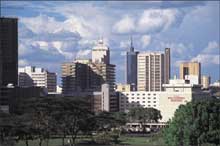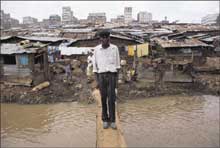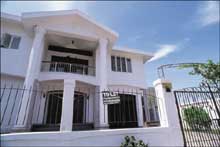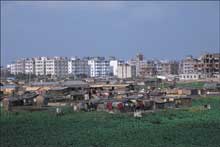|
|
|
|
|
|
|
|

Our world is increasingly more urban, with people moving to the cities and towns that exist on every continent. People move to cities looking for new opportunities and a different and better life. This drift means that almost 50%, of the global population of more than six billion people, live in urban areas. This is continuing to grow at a rate of two and a half times that in rural areas. In 25 years time urban areas will contain more than 75% of the world's population.
The cities of the Less Economically Developed Countries (LEDCs) did not start to mushroom until the late twentieth century. Migration, population growth and industrialisation provided the catalysts that have led to the huge cities of today. The lure of 'streets paved with gold' continues to draw thousands of people from their rural centres, only to discover the harsh realities of hunger, crime, disease and death in the large slums or squatter camps. Urban morphology
The numbers of poor people attracted to the cities of LEDCs continues to increase, bringing with it an increase in the severity and scale of the problems that city authorities have to face.
The rapid growth of cities has overtaken the provision of low cost housing, the result being the development of shantytowns and slum dwellings. At present, there are 100 million slum dwellers in the world's cities. Shantytowns grow up wherever there is space. Using anything that is available to provide shelter, these homes have no running water, sanitation, drainage or energy facilities. Often a number of people have to share one water tap and toilet. Open sewers run down the centres of the streets, carrying sewage that can pollute the water supply. With no rubbish collection, other waste lies in piles or heaps, scavenged by dogs and providing a natural breeding ground for diseases such as typhoid or cholera. Often overcrowded, extended families live together in appalling conditions.
|




